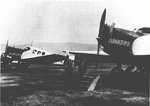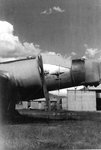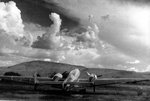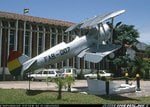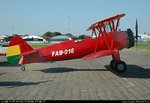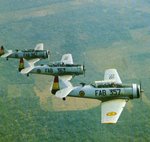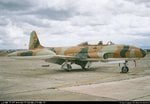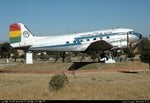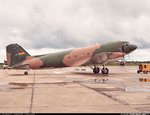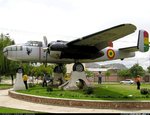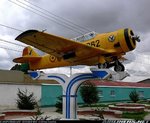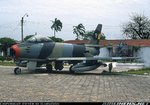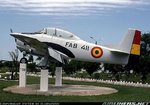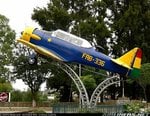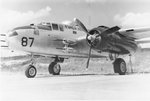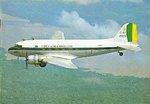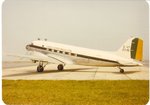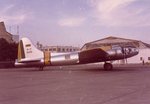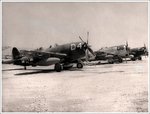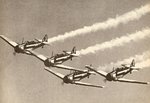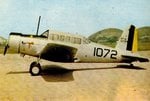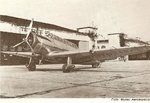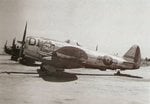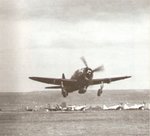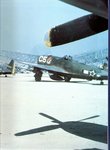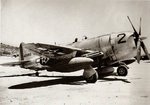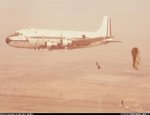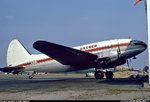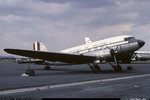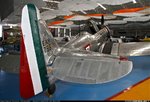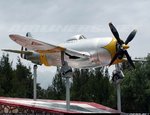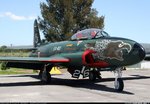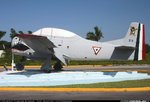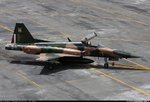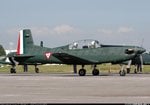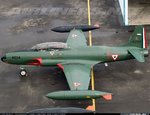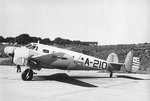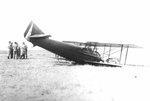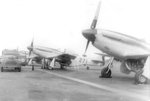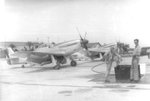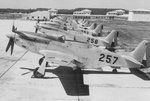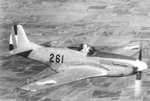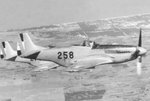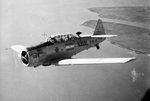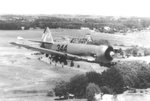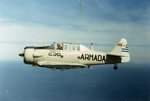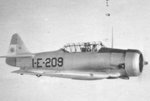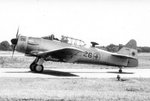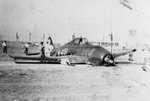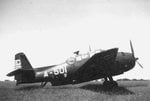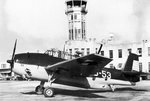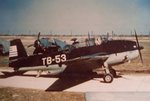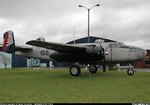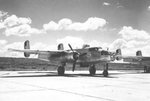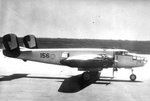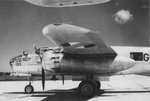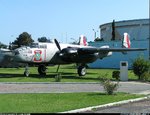- Thread starter
- #21
The FAB has its headquarters in La Paz and comprises about 4500 personnel. The Bolivian Air Force is divided into four Brigadas Aéreas. They are located at El Alto, near the capital city La Paz, Cochabamba, Tarija and Santa Cruz de la Sierra. In addition to these bases the air force uses a number of small airfields located throughout the country. Most of these, such as Ribaralta, Robore, Trinidad and Cobija, house small Grupo Aéreos, which are equipped with a few light transport and liaison aircraft.
Bolivia's landscape and infrastructure make transportation of goods and people one of the major tasks of the Bolivian Air Force. Therefore, nearly half of its inventory consists of (light) transport and liaison aircraft. The hub of transportation activities is concentrated on El Alto, where Grupo Aéreo de Transporte 71 is located. The greater part of GAT-71 is formed by the semi-military airline Transporte Aéreo Militar. TAM provides regular air services throughout the country and is a cheap alternative to Bolivia's national carriers Lloyd Aéreo Boliviano and Aero Sur. GAT-71 consist of three squadrons; Escuadrón Aéreo 710, Escuadrón Aéreo 711, Escuadrón Aéreo 712, respectively operating the Lockheed C-130, Fokker F.27 and Convair CV-580T.
At the moment a total of 18 T-33s are divided among two different units; Grupo Aéreo de Caza 31 at El Alto and Grupo Aéreo de Caza 32 at Santa Cruz de la Sierra. In May 2001 the FAB announced that an additional 8 T-33s had been bought from the Fuerza Aérea Ecuatoriana. The Ecuadorian T-33s have been in open storage at Manta Air Base since 1996. The first T-33s were expected to be ferried to Bolivia in June 2001. It is still not certain if a third unit, GAC-33 based at Tarija, will be equipped with the T-Bird again, once all updated T-33s and the additional aircraft arrived in the country.
The major part of the flight and military training syllabus for aspirant pilots is conducted at the Colegio Militar de Aviación (COLMILAV) based at Base Aérea El Trompillo in Santa Cruz de la Sierra. The primary flying course is flown on the Aerotec A.122 Uirapuru, locally designated T-23. Nineteen of these aircraft were bought in Brazil and the first one arrived in Bolivia in 1974. The primary course comprises a total of 120 hours. After this the cadet continues with the basic course, comprising a total of 130 hours divided among the Beech T-34 Mentor (80 hours) and the Cessna Ce.152 Aerobat (50 hours). The Aerobats are part of Grupo Aéreo de Entrenamiento 22 located at Robore. The cadets that finished the basic course successfully will be appointed to the different operational units to receive type conversion. Those who are selected to fly the T-Bird will move to Cochabamba to be trained on the Pilatus PC-7, that belongs to Grupo Aéreo de Caza 34.
The Fuerza de Tarea or Task Force, better known as the Diablos Rojos or Red Devils, is the FAB unit that is the most actively involved in the anti-narcotics policy of the Bolivian and American governments. The unit is paid for and under command by the Americans. Initally the unit operated 16 Bell UH-1 Huey helicopters which were officially owned by the U.S. Department of State. Nowadays the FAB have purchased 15 Hueys and these are completed with 6 US examples. All helo's wear Bolivian markings and are flown and maintained by FAB personnel. The five fixed winged aircraft are all confiscated during anti-narcotics operations and belong to the FAB. The unit works closely together with local police forces and DEA agents and is based in Santa Cruz de la Sierra. Most of its operational missions are flown from an airstrip near Villa Tunari on the edge of the Chapare region, the centre of Bolivias coca production.
Bolivia's landscape and infrastructure make transportation of goods and people one of the major tasks of the Bolivian Air Force. Therefore, nearly half of its inventory consists of (light) transport and liaison aircraft. The hub of transportation activities is concentrated on El Alto, where Grupo Aéreo de Transporte 71 is located. The greater part of GAT-71 is formed by the semi-military airline Transporte Aéreo Militar. TAM provides regular air services throughout the country and is a cheap alternative to Bolivia's national carriers Lloyd Aéreo Boliviano and Aero Sur. GAT-71 consist of three squadrons; Escuadrón Aéreo 710, Escuadrón Aéreo 711, Escuadrón Aéreo 712, respectively operating the Lockheed C-130, Fokker F.27 and Convair CV-580T.
At the moment a total of 18 T-33s are divided among two different units; Grupo Aéreo de Caza 31 at El Alto and Grupo Aéreo de Caza 32 at Santa Cruz de la Sierra. In May 2001 the FAB announced that an additional 8 T-33s had been bought from the Fuerza Aérea Ecuatoriana. The Ecuadorian T-33s have been in open storage at Manta Air Base since 1996. The first T-33s were expected to be ferried to Bolivia in June 2001. It is still not certain if a third unit, GAC-33 based at Tarija, will be equipped with the T-Bird again, once all updated T-33s and the additional aircraft arrived in the country.
The major part of the flight and military training syllabus for aspirant pilots is conducted at the Colegio Militar de Aviación (COLMILAV) based at Base Aérea El Trompillo in Santa Cruz de la Sierra. The primary flying course is flown on the Aerotec A.122 Uirapuru, locally designated T-23. Nineteen of these aircraft were bought in Brazil and the first one arrived in Bolivia in 1974. The primary course comprises a total of 120 hours. After this the cadet continues with the basic course, comprising a total of 130 hours divided among the Beech T-34 Mentor (80 hours) and the Cessna Ce.152 Aerobat (50 hours). The Aerobats are part of Grupo Aéreo de Entrenamiento 22 located at Robore. The cadets that finished the basic course successfully will be appointed to the different operational units to receive type conversion. Those who are selected to fly the T-Bird will move to Cochabamba to be trained on the Pilatus PC-7, that belongs to Grupo Aéreo de Caza 34.
The Fuerza de Tarea or Task Force, better known as the Diablos Rojos or Red Devils, is the FAB unit that is the most actively involved in the anti-narcotics policy of the Bolivian and American governments. The unit is paid for and under command by the Americans. Initally the unit operated 16 Bell UH-1 Huey helicopters which were officially owned by the U.S. Department of State. Nowadays the FAB have purchased 15 Hueys and these are completed with 6 US examples. All helo's wear Bolivian markings and are flown and maintained by FAB personnel. The five fixed winged aircraft are all confiscated during anti-narcotics operations and belong to the FAB. The unit works closely together with local police forces and DEA agents and is based in Santa Cruz de la Sierra. Most of its operational missions are flown from an airstrip near Villa Tunari on the edge of the Chapare region, the centre of Bolivias coca production.

